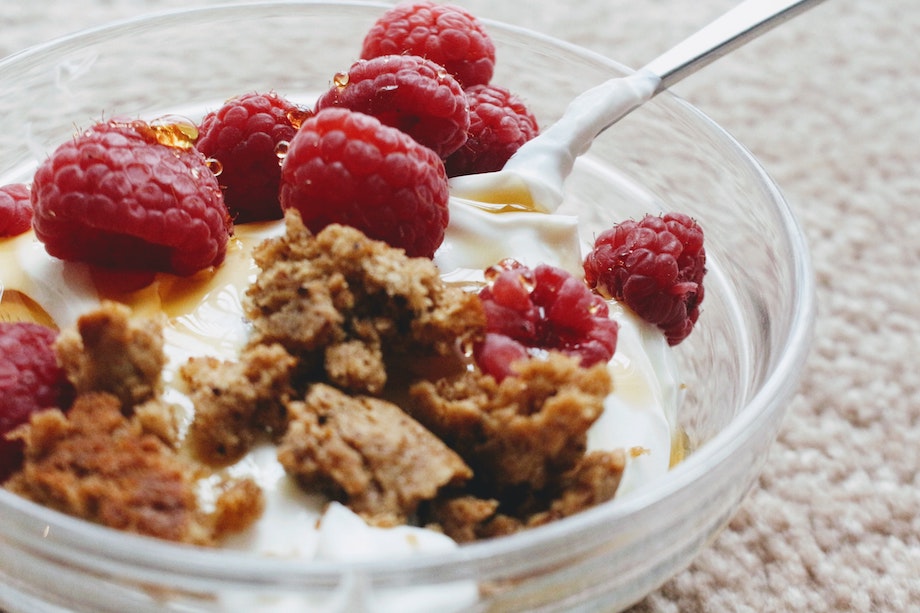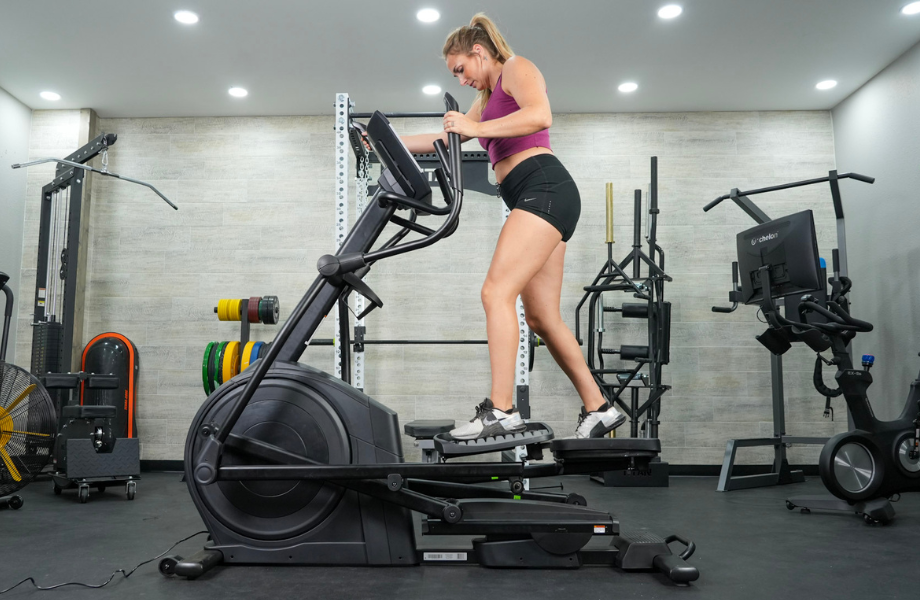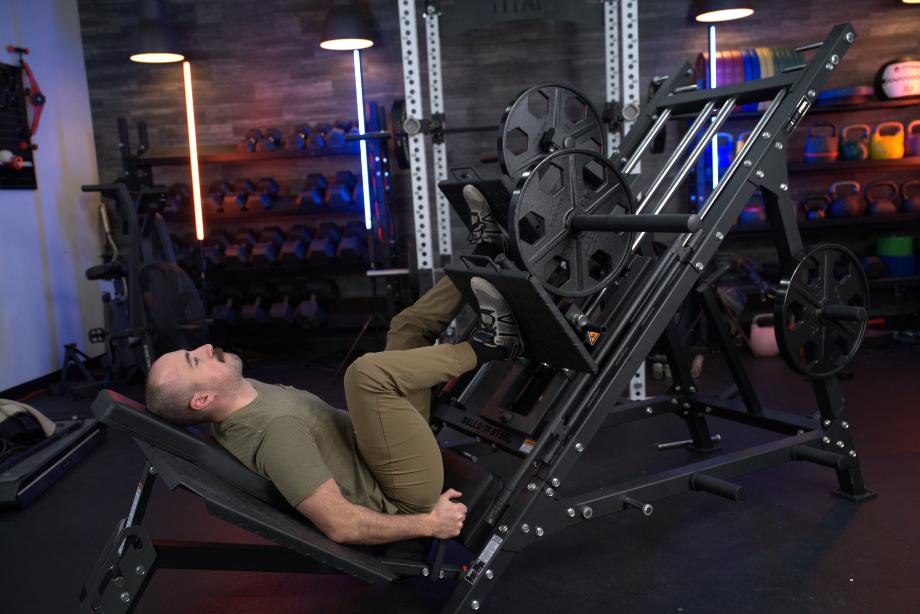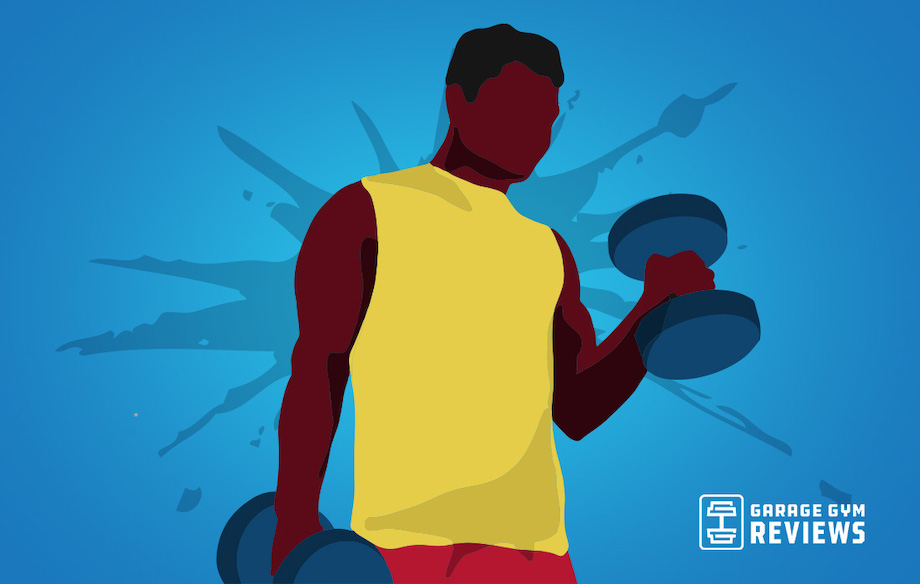Protein: the macronutrient that we all love, and the one in which healthy eating is predicated upon. High-protein foods with low fat can pack even more of a punch, as these foods are usually equipped with bioactive compounds that help promote your overall health, like fiber, vitamins, probiotics, minerals, amino acids; the list goes on.
Since most high-protein low-fat food has bioactive compounds, it can also be classified as functional food. Essentially, this means that your food is more than food. Functional foods operate at an elevated level compared to other foods by improving your overall health in addition to nourishing your body.
What food sources contain our beloved protein and have limited fat content? Take a look below.
Medical disclaimer: This article is intended for educational and informational purposes only. It is not intended as a substitute for medical advice. For health advice, contact a licensed healthcare provider.
9 High-Protein Low-Fat Foods
Check out our top nine protein options for high-protein low-fat foods and consider adding them to your diet if they help you meet your goals.
1. Chicken Breast
Packing about 30 grams of protein1 per 3.5 ounces, chicken offers the lowest fat-to-protein ratio compared to other meats. Chicken prepared skinless is the most desirable preparation method, as the fat content will be lowest. Baking it or cooking it in an air fryer will offer the lowest-fat cooking methods.

Chicken breast2 has approximately 3 grams of fat for every 3.5 ounces of meat; red meat such as beef and lamb naturally have higher amounts of trans fat and saturated fat. Furthermore, while it doesn’t provide a ton of it, chicken breast can supply omega–3 fatty acid3 , an essential polyunsaturated fatty acid, if the chickens are fed a diet with flaxseed and chia seed. Omega–3 fatty acids are protective against coronary heart diseases, help boost immunity, and reduce inflammation.
2. Non-Fat Greek Yogurt
If you’re looking for a low-calorie, high-protein, calcium-rich snack, non-fat Greek yogurt has got you covered. Protein content will vary depending on the brand you buy, but according to the USDA4, one 5-ounce container of Greek yogurt has 17 grams of protein. Non-fat Greek yogurt is generally going to be a solid protein source that is typically budget-friendly.
Greek yogurt also offers something that most other protein-packed sources do not: probiotics5. Probiotics promote gastrointestinal health by helping you stay regular, breaking down your food, and supporting cell growth that inhibits bad bacteria from overpopulating in your gut. An excellent source of protein and calcium, dairy products such as yogurt will have varied fat content based on what brand and composition you buy.
RELATED: Best Probiotic Supplements
3. Eggs
Both popular and of high nutrition quality is the humble egg. For humans, whole eggs are nutritious and easily digested by most people, and they make for a great high-protein breakfast. There has been speculation in the past that the cholesterol found in egg yolk could contribute to cardiovascular disease, however, through many studies6, this has been debunked. There is no correlation between whole egg consumption and a rise in total cholesterol levels.
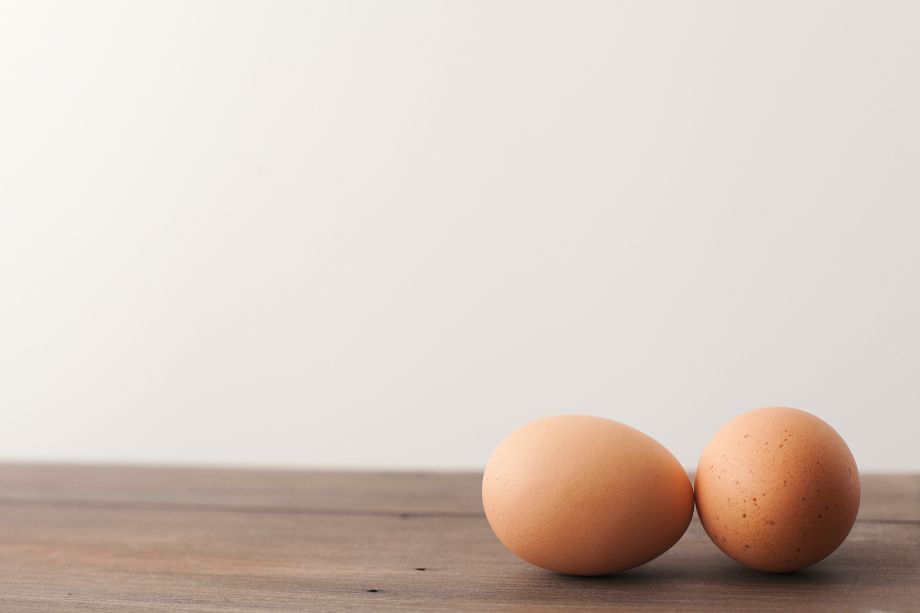
Eggs are very versatile for a high-protein diet as well. Fried, scrambled, poached, boiled, you name it—they can easily be incorporated into your daily routine. Whole eggs are also composed of two parts: the yolk and the white. Wondering how much protein in an egg? The egg yolk7 is going to be around 4.5 grams of fat and 2.7 grams of protein for one large egg, whereas egg whites8 are 0.1 grams of fat and 3.6 grams of protein for one large egg.
4. White Fish
You might have seen the best fish oil supplements in the vitamin aisle, or your doctor or dietitian may have encouraged you to start them. But why? Fish meat contains omega-3 fatty acids and other bioactive compounds9 that are linked to preventing the development of cancer, heart disease, and Type 2 diabetes.
Protein-rich white fish such as halibut and tilapia are a great choice. A 3-ounce filet of tilapia10 has 22 grams of protein and 2.2 grams of fat. A 3-ounce filet of halibut11 has 16 grams of protein but only 1.4 grams of fat. Consumption of white fish has been correlated with controlling blood pressure, regulating hormones, and enhancing your immune system.
5. Edamame
Full of insoluble dietary fiber, edamame12 offers many health benefits. For every one cup of cooked edamame13, you will get 17 grams of protein and 8 grams of fat. A majority of the fat found in edamame is derived from monounsaturated and polyunsaturated fats. Unsaturated fats are healthy fats and help your body with normal maintenance and function. Saturated fat is unhealthy fat that contributes to disease development.
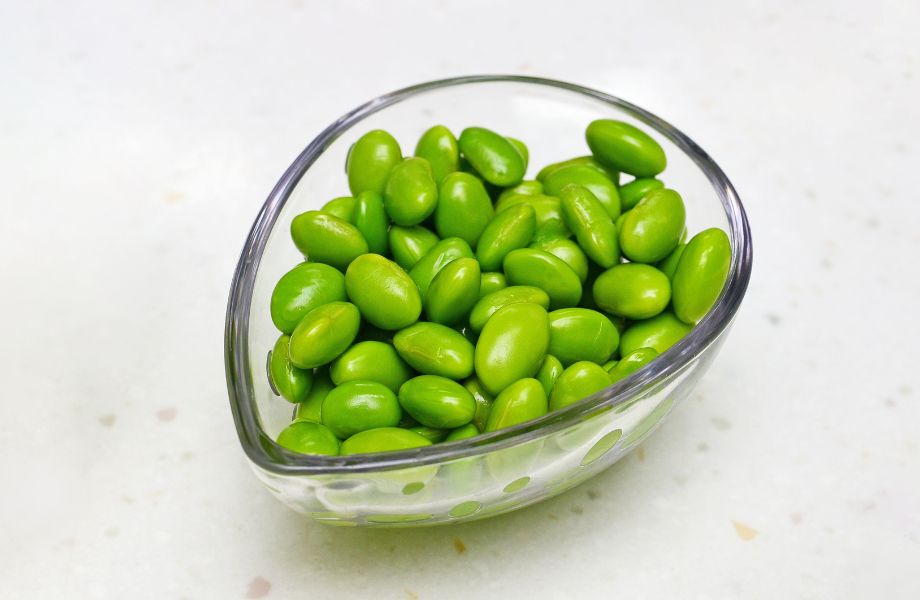
The insoluble fiber14 found in edamame helps with bowel regularity and supports your body’s sensitivity to insulin. In doing so, edamame can work as a protective measure against developing diabetes.
6. Low-Fat Cottage Cheese
An excellent snack for after working out, one cup of low-fat cottage cheese15 has 31 grams of protein and 4 grams of total fat (compared to 10 grams of fat for high-fat regular cottage cheese). Cottage cheese is a good source of many micronutrients, but a notable one is vitamin A. Vitamin A16 is essential for glucose regulation, promotes wound healing, and functions as an antioxidant. All of these characteristics help with post-workout recovery, in regards to regulating insulin release and repairing muscle mass microtears to help build muscle.
7. Tempeh
Hear us out on this one: Although plant-based protein tempeh is high-protein, it’s fairly high-fat as well. A cup of tempeh17 offers an impressive 33 grams of protein and 18 grams of fat. But, since tempeh is made from fermented soybeans, the majority of its fat content is plant–based and made up of unsaturated fats that will not increase your risk for heart disease.
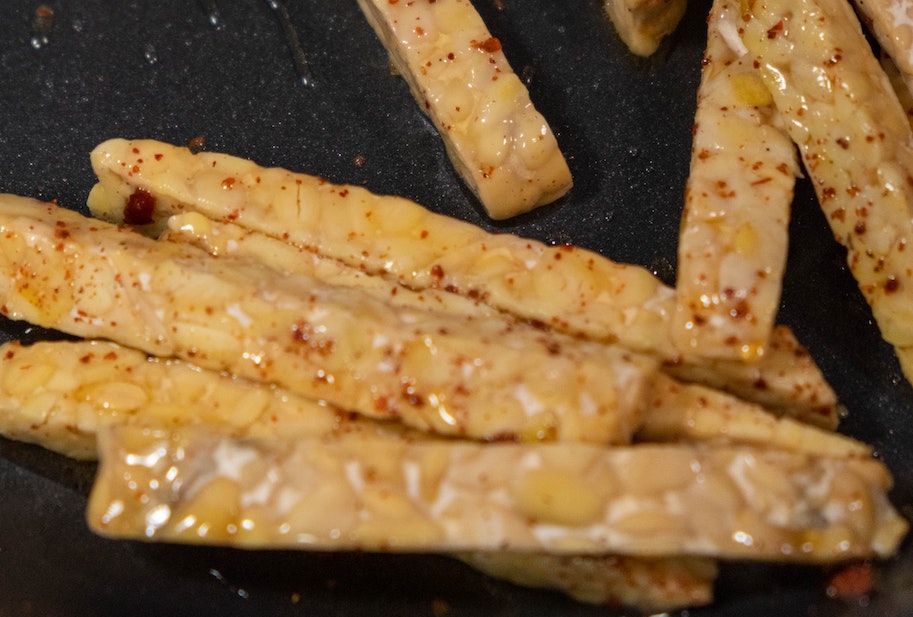
One study18 found that tempeh is particularly beneficial in preventing high blood pressure and confirmed its use as a functional food. This means that tempeh offers significant health benefits, in addition to it being of high nutritious value.
8. Lentils
A powerful plant–based protein source, cooked lentils19 have 18 grams of protein and a mere 0.8 grams of fat per cup. Also qualifying as a functional food, lentils are an excellent source of bioactive peptides20. Made from proteins, the bioactive peptides found in lentils offer protective measures against heart and gastrointestinal diseases. Lentils are grain legumes that are rich in the essential amino acid leucine. Leucine heavily impacts lean muscle growth in a positive way by helping to build muscle.
9. Whey Protein Powder
The best whey protein powder is a popular post-workout supplement. Let’s briefly review the “why.”
Regardless of dietary intake patterns, when whey protein powder is coupled with effective resistance exercises, muscle mass, strength, and endurance increases. Regular supplementation with 20 grams of whey protein isolate three times per day helped participants of one study significantly improve their extensor muscles21, leading to an easier time bulking when compared to their non-whey-consuming counterparts.
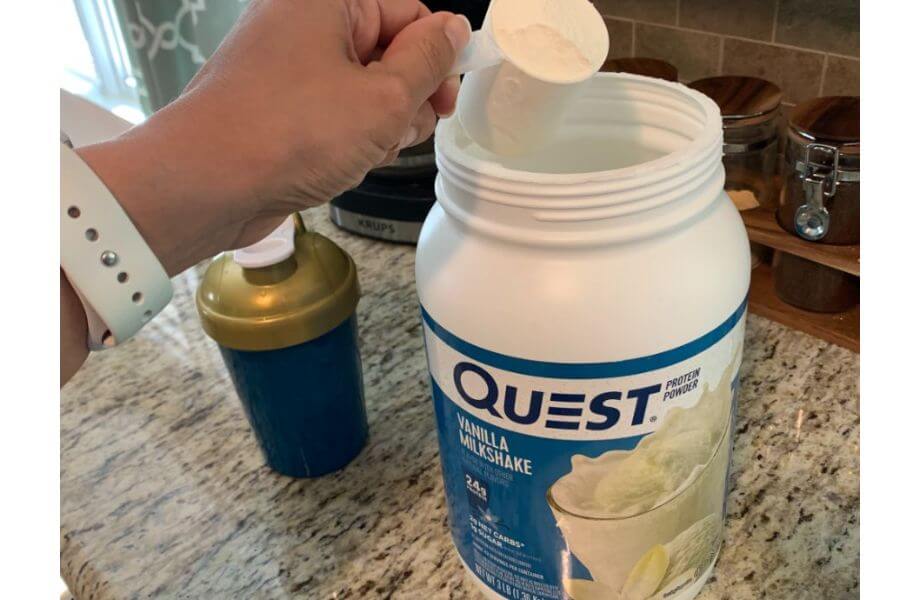
The amount of protein and fat your whey protein powder supplement of choice contains will vary by brand, so be sure to read the nutrition facts label prior to your purchase to make sure it is in line with your health and fitness goals.
RELATED: Best Protein Powder
High-Protein Low-Fat Foods: Final Thoughts
High-protein low-fat foods offer many health benefits. These foods can also be transformed based on how you prepare them. For example, if you do not enjoy eating non-fat Greek yogurt by itself, you can always add it to a smoothie or make popsicles with it to change the flavor and texture. Not only do the foods above provide your body nutritious protein intake and low fat, but most are also categorized as functional foods: This means that their health benefits extend beyond that of their nutritional value and can:
- Improve your ability to gain muscle mass and recover smoothly post-workout by metabolizing vitamins, minerals, and amino acids more effectively
- Improve your heart health and decrease risk of cardiovascular disease by improving blood pressure and lipid panels through omega-3 fatty acids
- Decrease your risk of Type 2 diabetes development by increasing insulin sensitivity and helping to regulate blood sugar
- Decrease your risk of cancer, specifically gastrointestinal cancer, by improving gut health through fiber and probiotics
High-Protein Low-Fat Foods: Q&A
What foods are low in fat but high in protein?
Foods that are a good source of protein and low-fat are: chicken (specifically breast), non–fat Greek yogurt, eggs (specifically egg whites), white fish, edamame, low-fat cottage cheese, tempeh, lentils, black beans, and whole grain quinoa.
How can I increase my protein without fat?
Consider high-protein, low-fat whole-food sources like chicken breast, white fish, and non-fat Greek yogurt. Supplemental protein powder can also be a way to increase protein without increasing fat intake. These protein-rich supplements are derived from sources like whey, pea, or egg and generally have low fat content.
What foods are high in protein but low in fats and carbs?
Some high-protein foods that are low-fat and low-carb are chicken, white fish, lean beef, turkey, and eggs. When choosing a lean protein beef source, keep in mind that the leaner the cut of meat, the lower the fat content.
A healthy diet consists of all three macronutrients: protein, carbohydrates, and fat. Be sure to meal plan and build your plate well so that your body has the appropriate amount of each macro to keep you healthy. If your goal is to shed a few pounds, a high-protein diet with whole grains, fruits, and veggies can help you stay within your macros for weight loss.
These statements have not been evaluated by the Food and Drug Administration. This product is not intended to diagnose, treat, cure, or prevent any diseases.
References
- https://fdc.nal.usda.gov/fdc-app.html#/food-details/171477/nutrients
- Farrell D. The nutrition benefits of chicken meat compared with other meats. Poultry Development Review. 2013;1:10. Accessed April 11, 2023. https://scholar.cu.edu.eg/wafaaabdelghany/files/book_41.pdf#page=10
- Alagawany M, Elnesr SS, Farag MR, et al. Nutrition significance and health benefits of omega-3, -6, and -9 fatty acids in animals. Anim Biotechnol. 2022;33(7):1678-1690. doi: 10.1080/10495398.2020.1869562
- https://fdc.nal.usda.gov/fdc-app.html#/food-details/170894/nutrients
- Olson DW, Aryana KJ. Probiotic incorporation into yogurt and various novel yogurt-based products. Appl Sci. 2022;12(24):12607. doi: 10.3390/app122412607
- Réhault-Godbert S, Guyot N, Nys Y. The golden egg: nutritional value, bioactivities, and emerging benefits for human health. Nutrients. 2019;11(3):684.doi: 10.3390/nu11030684
- https://fdc.nal.usda.gov/fdc-app.html#/food-details/748236/nutrients
- https://fdc.nal.usda.gov/fdc-app.html#/food-details/748236/nutrients
- Kundam DN, Acham IO, Girgih AT. Bioactive compounds in fish and their health benefits. Agric Food Sci. 2018;4(4):1-14. doi: 10.9734/AFSJ/2018/41803
- https://fdc.nal.usda.gov/fdc-app.html#/food-details/175177/nutrients
- https://fdc.nal.usda.gov/fdc-app.html#/food-details/174232/nutrients
- Yu D. Chemical compositions of edamame beans and valorization of edamame shells. Virginia Tech. Published January 01, 2023. Accessed April 12, 2023. https://vtechworks.lib.vt.edu/handle/10919/113373
- Akbar A, Shreenath AP. High fiber diet. StatPearls Publishing. Published July 10, 2020. Accessed April 12, 2023. https://europepmc.org/article/med/32644459#free-full-text
- Zinder R, Cooley R, Vlad LG, et al. Vitamin A and wound healing. Nutr Clin Pract. 2019;34:839-849. doi: 10.1002/ncp.10420
- Chalid SY, Hermanto S, Rahmawati A. Angiotensin converting enzyme inhibitor activity of the soybean tempeh protein as functional food. Int J GEOMATE. 2019;16(56):73-78. doi: 10.21660/2019.56.4583
- Khazaei H, Subedi M, Nickerson M, et al. Seed protein of lentils: current status, progress, and food applications. Foods. 2019;8(9):391. doi: 10.3390/foods8090391
- Kim CB, Park JH, Park HS, et al. Effects of whey protein supplement on 4-week resistance exercise-induced improvements in muscle mass and isokinetic muscular function under dietary control. Nutrients. 2023;15(4):1003. doi: 10.3390/nu15041003


